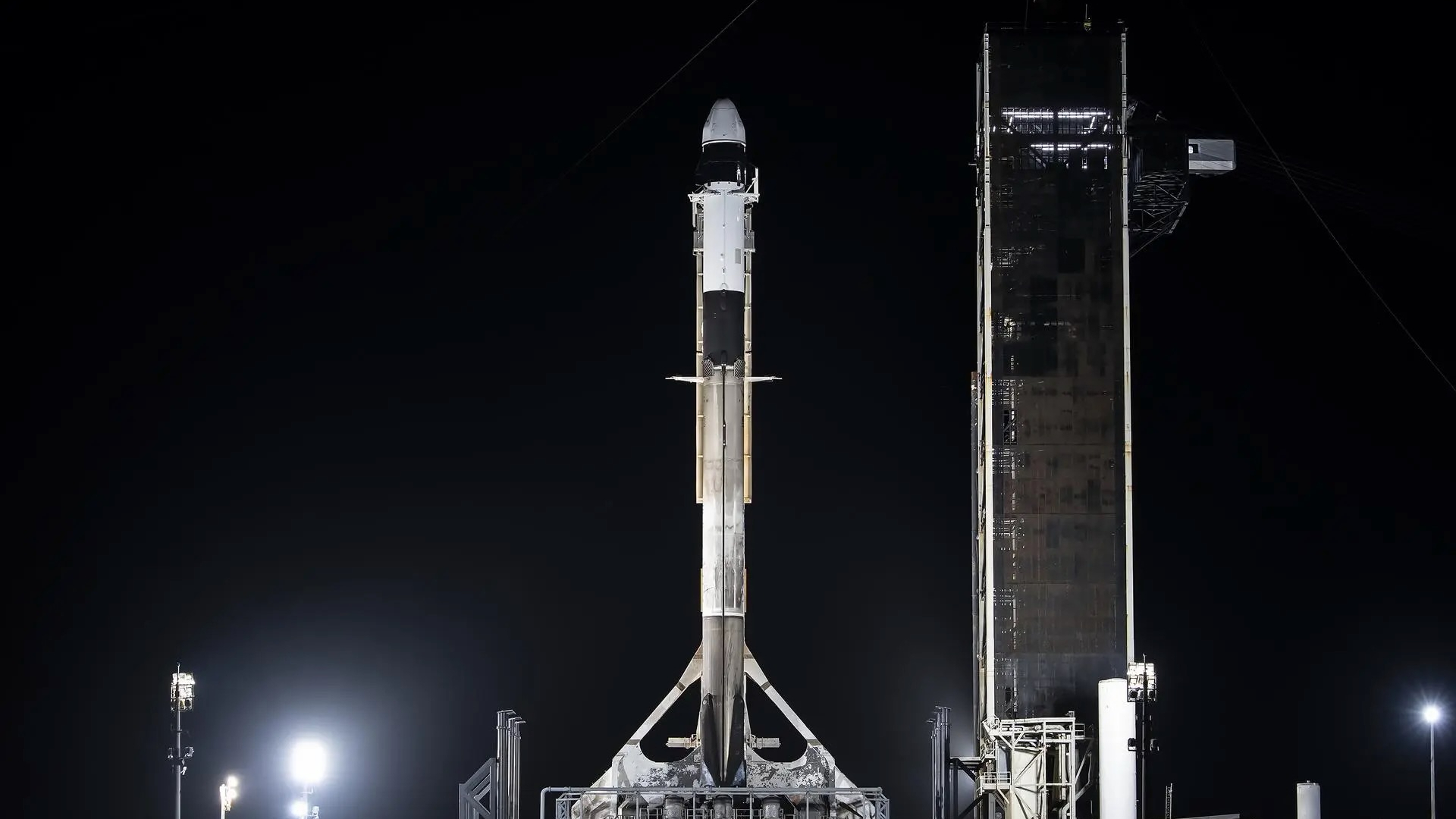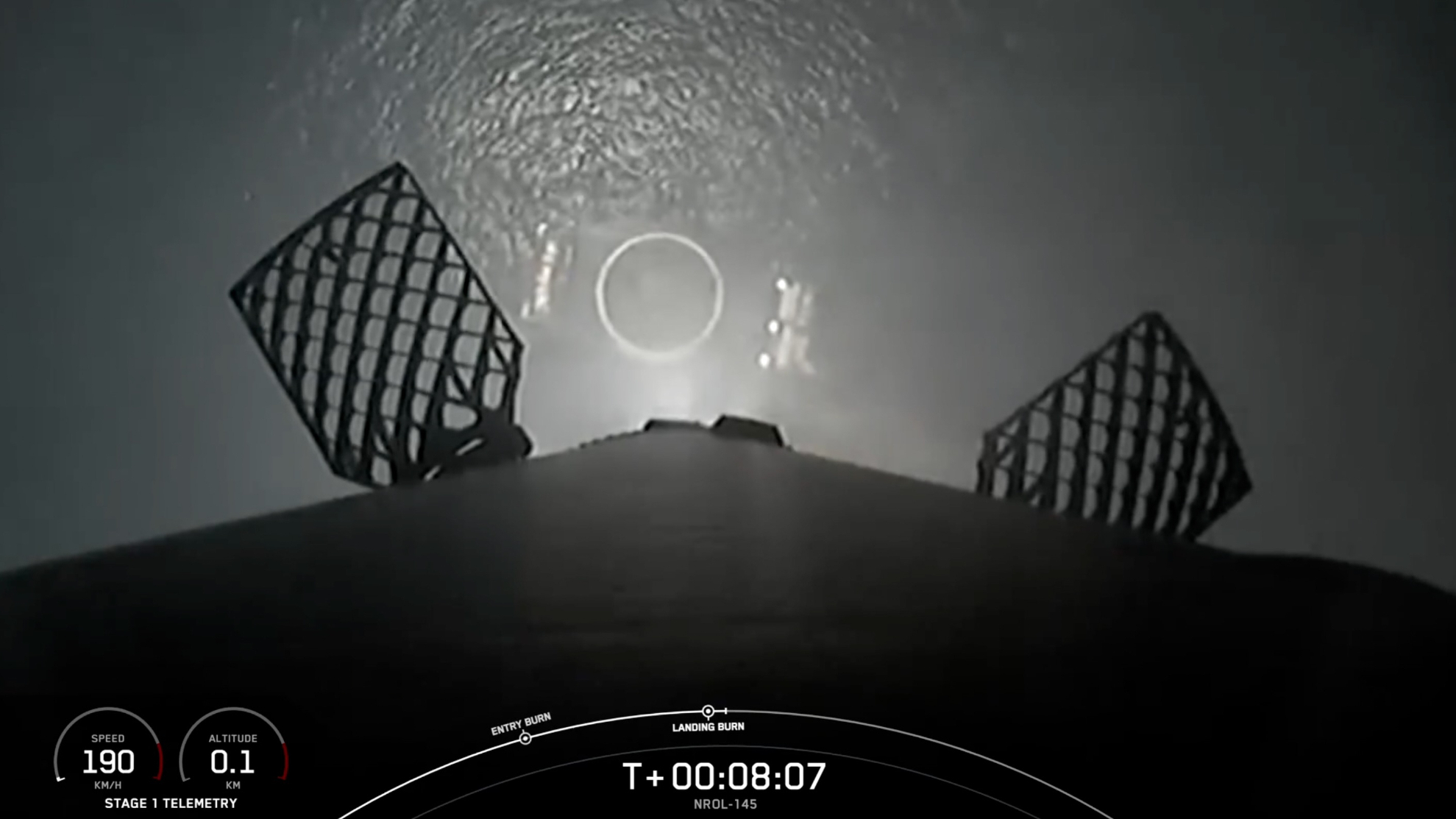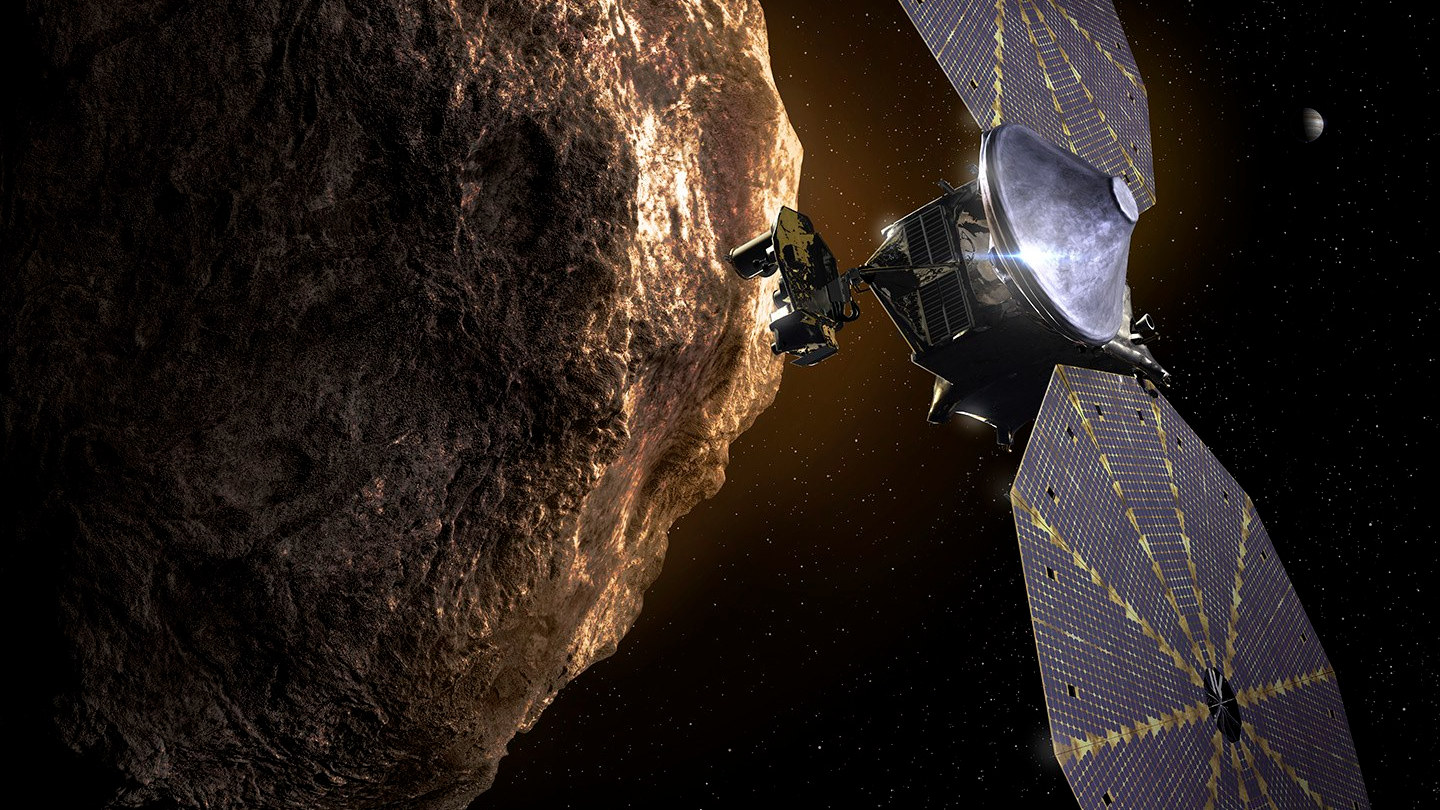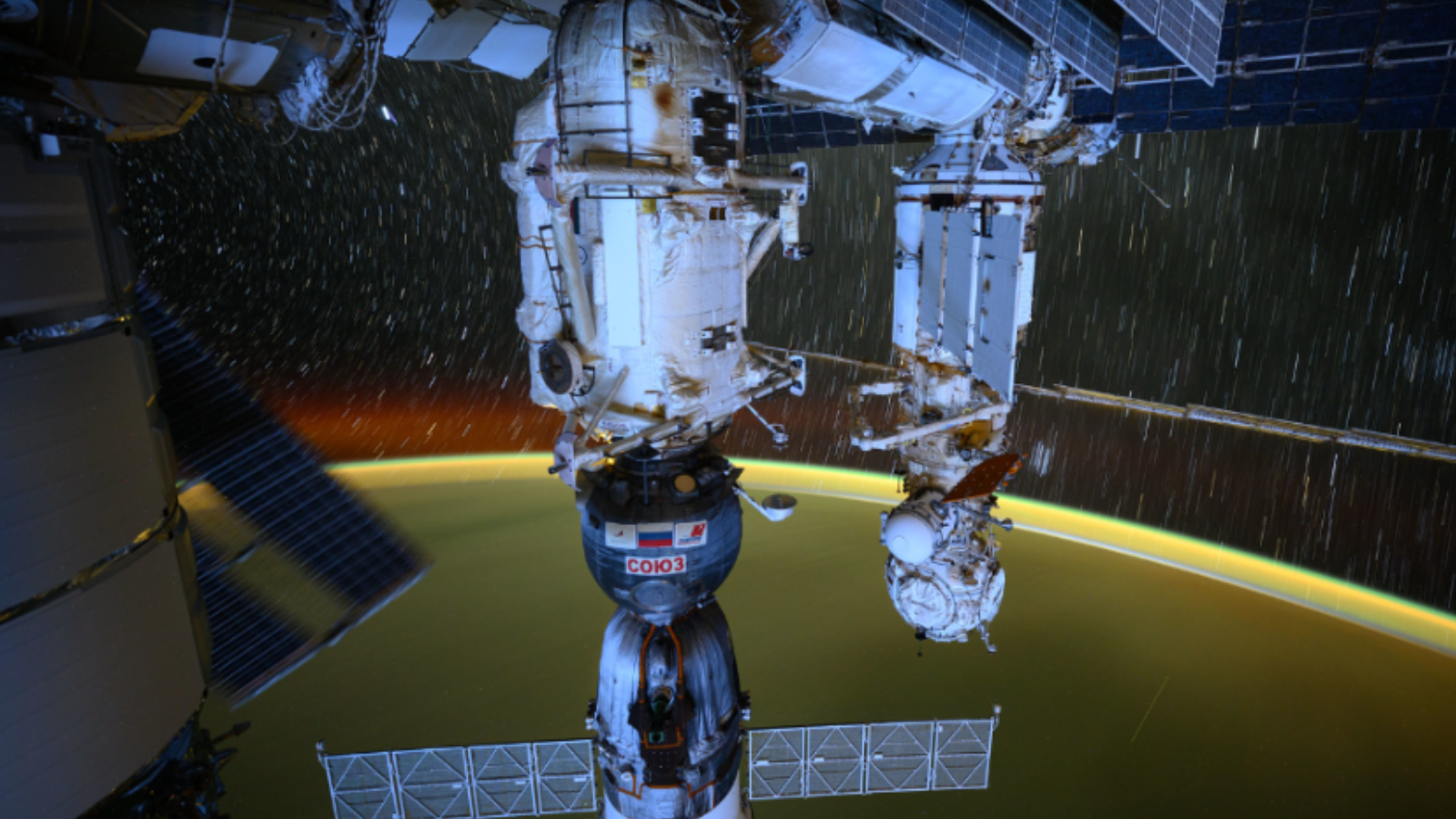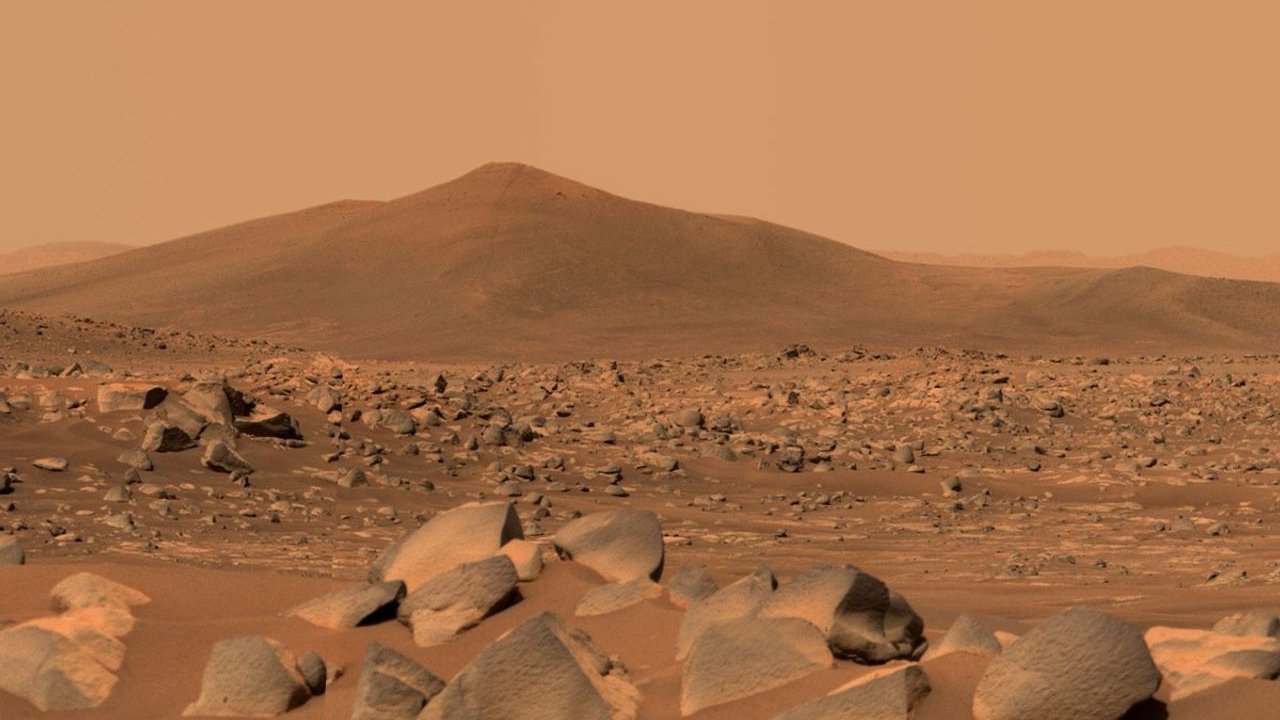NASA stacks moon-bound Artemis 2 rocket: Space photo of the day
The Space Launch System (SLS) core stage and rocket boosters have now been stood up and mated in preparation for NASA's Artemis 2 moon mission.
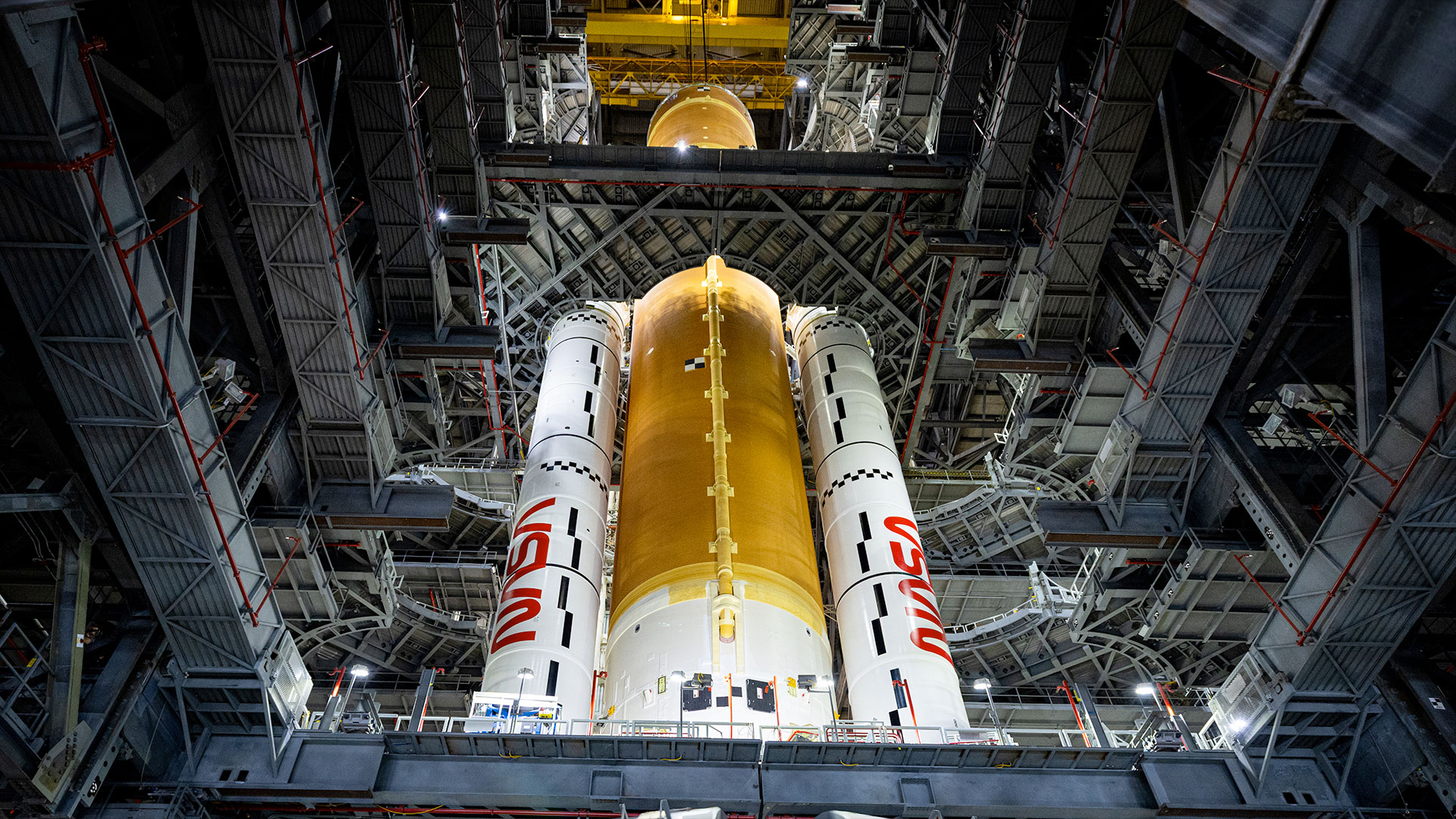
On March 23, 2025, technicians working at NASA's Kennedy Space Center mated together major elements of the rocket that will launch the Artemis 2 mission with the first humans to the moon in more than 50 years.
Why is this amazing?
The core stage, which is covered in yellow-orange foam insulation, is the largest component of the Space Launch System (SLS) rocket, standing 212 feet tall (65 meters). In addition to holding the propellant for its four rear-mounted rocket engines, the core is the backbone of the rocket, supporting the launch vehicle stage adapter, interim cryogenic propulsion stage, Orion stage adapter and the Orion spacecraft for the Artemis 2 mission.
Standing on either side of the core stage are twin five-segment solid rocket boosters, which were earlier stacked on the same mobile launch platform. Standing 177 feet tall (54 meters), the two boosters will provide the majority of the thrust needed to propel the four Artemis 2 astronauts on their journey around the moon.
Where is this?
From the vantage point of the photo, you are looking up and into High Bay 2 of the Vehicle Assembly Building (VAB) at NASA's Kennedy Space Center in Floridia.
Once the most voluminous building in the world, the VAB was previously used to stack the Apollo-era Saturn V rocket and the space shuttles that flew for 30 years.
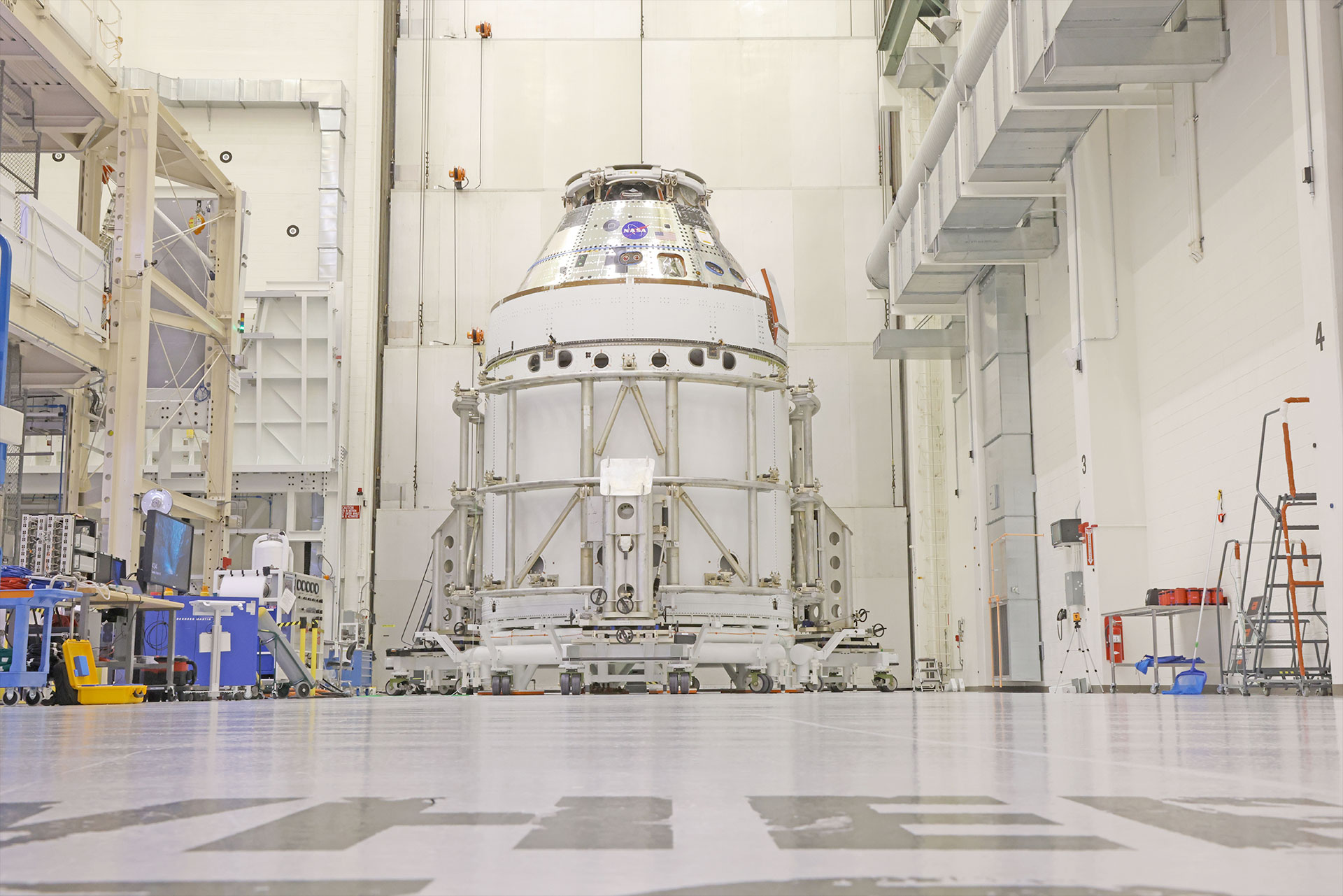
What happens next?
The launch vehicle stage adapter will be the next element of the SLS lifted and secured atop the core stage in the coming weeks.
Meanwhile, the Orion spacecraft and its European Service Module have been stacked and configured for flight and are waiting their move to the VAB from the Neil A. Armstrong Operations and Checkout Building at the Kennedy Space Center.
Once fully assembled, the Orion topped SLS will be rolled out to Launch Complex 39B for testing. The Artemis 2 mission is targeted for launch no earlier than April 2026.
Where can I learn more?
You can read and see more from the stacking of the Artemis 2 core stage and boosters, as well as learn more about NASA's Artemis 2 mission.
You can also follow the latest updates about the Artemis 2 mission here.
Get the Space.com Newsletter
Breaking space news, the latest updates on rocket launches, skywatching events and more!
Join our Space Forums to keep talking space on the latest missions, night sky and more! And if you have a news tip, correction or comment, let us know at: community@space.com.
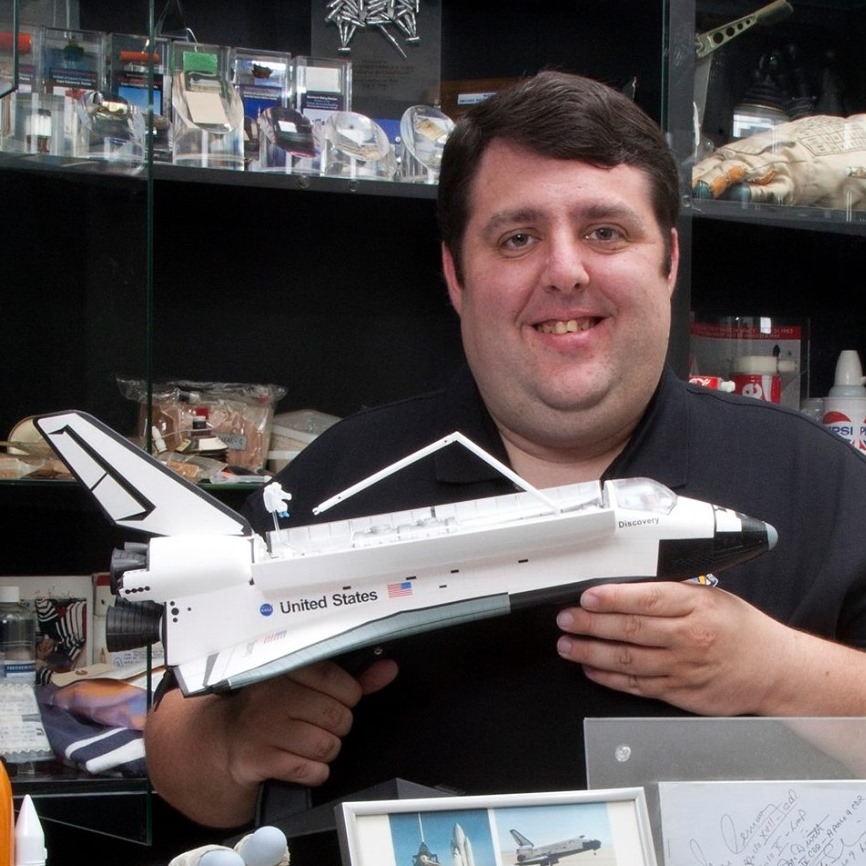
Robert Pearlman is a space historian, journalist and the founder and editor of collectSPACE.com, a daily news publication and community devoted to space history with a particular focus on how and where space exploration intersects with pop culture. Pearlman is also a contributing writer for Space.com and co-author of "Space Stations: The Art, Science, and Reality of Working in Space” published by Smithsonian Books in 2018.In 2009, he was inducted into the U.S. Space Camp Hall of Fame in Huntsville, Alabama. In 2021, he was honored by the American Astronautical Society with the Ordway Award for Sustained Excellence in Spaceflight History. In 2023, the National Space Club Florida Committee recognized Pearlman with the Kolcum News and Communications Award for excellence in telling the space story along the Space Coast and throughout the world.
You must confirm your public display name before commenting
Please logout and then login again, you will then be prompted to enter your display name.
